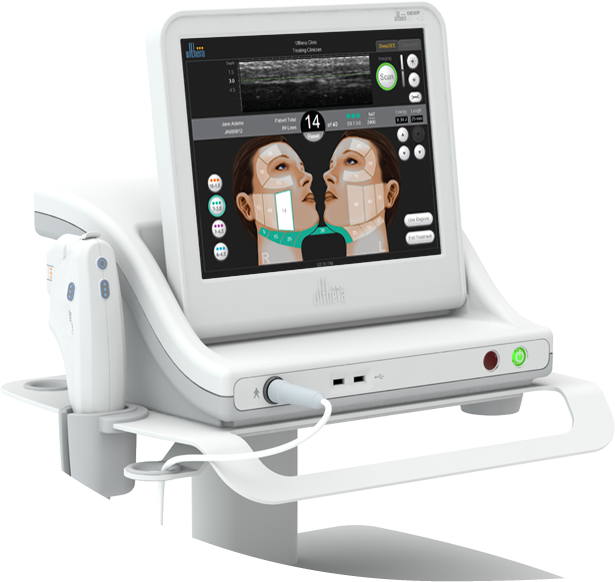Ultherapy
Ultherapy® is an entirely new and unique type of non-surgical treatment for the face that uses ultrasound to actually lift and tone loose skin without any downtime. Ultherapy utilizes the Ulthera® System, which is the first and only device cleared by the FDA for use as a non-invasive treatment for lifting tissue of the face. For the first time ever, we can achieve significant lifting by focusing the energy specifically into the deep foundation below the skin that is addressed in surgery, as well as into the skin itself.
By using ultrasound, we can lift and tighten the skin without cutting or disrupting the surface of skin. In other words, we are improving skin quality from the inside out. Ultherapy is the only cosmetic procedure to use ultrasound imaging, which allows us to see the layers of tissue we target during treatment and ensure that the energy is delivered precisely to where it will be most productive. In a surgical facelift, the layer of tissue that is pulled tighter causing a longer lasting result is called the SMAS (superficial muscular aponeurotic system). It is basically a layer of tissue that lies on top of the muscles of the face. In surgery, by pulling it tighter with sutures, the tissue is lifted. With Ultherapy, precise heating of this tissue by ultrasound can create a controlled tightening of this same layer of tissue.
In addition to the visible effects of lifting and tightening, there also is an invisible result with the natural creation of new collagen, which can help the skin maintain its youthfulness. Surgical facelifts will always be a viable option, but there are many people who aren’t ready for that and are looking for non-surgical options that produce a meaningful effect. Patients like that the process is natural and that the effect is gradual.
Ultherapy is complementary to other procedures addressing more superficial tissue such as lasers. It is safe to perform with other treatment modalities such as Botox and fillers.



